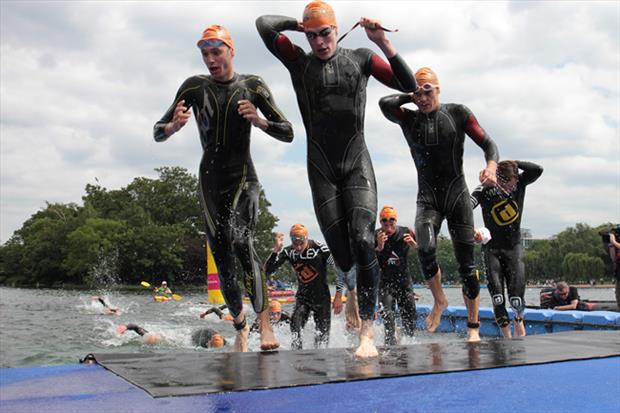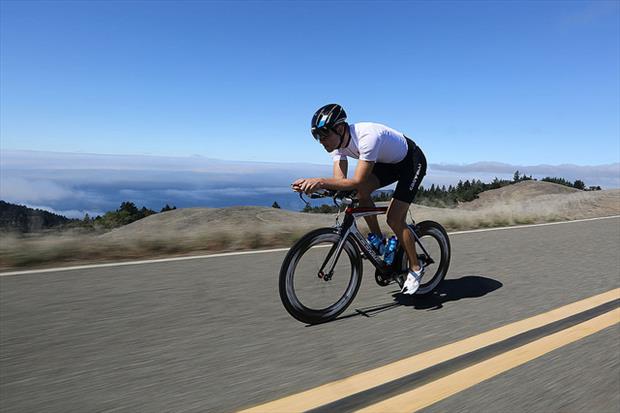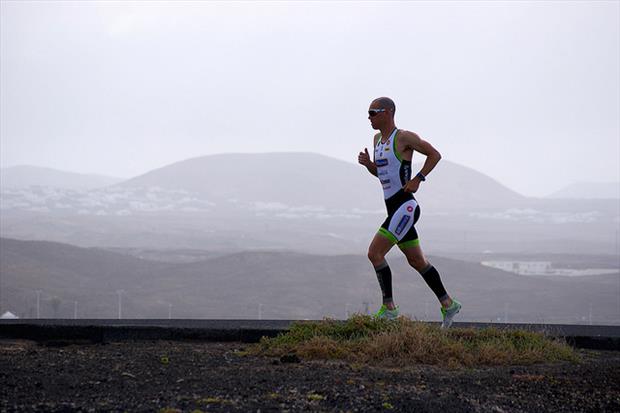Understanding Triathlon Gear
Maybe your best friend talked you into it. Maybe you’re looking for an athletic challenge that takes you outside the confines of a gym. Maybe you lost a bet. Whatever your reason for committing to your first triathlon, your life will never be the same.
Once you cross that finish line, you’ll be able to call yourself a triathlete, which is a pretty impressive bullet point to add to your résumé of life. But in order to cross that line in a blaze of sweaty glory, you’ll need a few pieces of essential gear to help get you there. You’ll also need to train for whatever event you’re planning to participate in, but this article is focused on the equipment you’ll need for your first triathlon.

Swim – Usually the scariest portion of a triathlon for newbies, the thought of navigating an aquatic labyrinth of thrashing limbs can be daunting. The best thing you can do to prepare for the swim leg of a triathlon is to practice swimming in open water, assuming your race doesn’t take place in a pool. If your race is in a lake, river or ocean, wearing a wetsuit is the best way to increase your enjoyment during the swim. While not mandatory, wearing a wetsuit will make you more buoyant and ultimately faster. There are dozens of trusted brands out there with huge variations in price and features. If you’re just starting out and aren’t planning to be ultra-competitive, find a suit that fits you well – both on your body and in your price range. Don’t worry too much about getting the most expensive or flashiest suit.
Goggles are another piece of critical piece of gear you’ll need for the swim. Consider a pair of goggles with oversized lenses to increase your peripheral view in open water. The perfect fitting goggle will caress and conform to your face when you put it on like Cinderella sliding her foot into the majestic glass slipper. Investing in some anti-fog spray is a practical idea because foggy goggles make it nearly impossible to see the buoys that mark the course. The race organizers will provide you with a swim cap so you don’t have to worry about bringing your own unless the water is really cold, in which case wearing a neoprene cap under your race cap is a wise idea.
You’ll wear your race clothes under your wetsuit so you don’t have to change in the transition area. Triathlon-specific shorts have a thin chamois pad and are made of quick drying material that wicks sweat. Triathlon-specific tops usually have zippers to help control ventilation and pockets to stash a gel or bar. You can certainly race in non-technical athletic apparel, but a pair of good tri shorts will go a long way toward your overall comfort while racing.

Bike – We’ll start with the obvious. You need a bike. You don’t need a tricked out, carbon fiber aerodynamic machine that costs more than your car. Pretty much anything with two wheels will do, but make sure your bike is in proper working order by taking it into a local bike shop to see if it needs any work prior to your race. If you’ve got a road bike and want to invest in speed, a set of clip-on aerobars is the best upgrade you can make. By putting your hands and arms out in front of your handlebars, you greatly decrease the area of your body exposed to the wind, which will make you go faster and save energy so you’re fresher for the run.
If your helmet is more than a few years old, it’s time to invest in a new lid. Helmets don’t retain their ability to protect your head in the event of a crash forever. The life of a helmet varies depending on the model and usage amount, but if your helmet is more than five years old, it’s best to get a new one. An aerodynamic helmet can potentially shave minutes off your time, but a simple, well-ventilated helmet that fits your head is all you really need. Leave a pair of sunglasses in the transition area next to your helmet to keep the sun and bugs out of your eyes.
Cycling shoes and clipless pedals are perhaps the most critical investment you can make in terms of enjoying your experience on the bike. Contrary to your intuition, clipless pedals actually “clip in” to cleats on the bottom of your shoes. While you can certainly race in running shoes and platform or flat pedals, you’ll save massive amounts of energy using clipless shoes and pedals. Since you can transfer energy to your pedals on the up and down stroke of your pedaling arc, you become significantly more efficient while cycling, which can lead to a serious payoff on the run.

Run – Unless you are part Tarahumaran, which is a tribe of people native to a region in northwestern Mexico renowned for their near-barefoot running abilities, you’ll want to pick up a pair of reliable running shoes that offers the correct amount of cushion and support for your foot stride. Do you have flat arches that cave in when you run? Look for a shoe with ample support to help correct that over-pronation. Do you have a gazelle-like stride that would make the Tarahumara jealous? Then look for a neutral shoe because you’ve been blessed with an efficient stride that won’t require additional support. There are literally hundreds of foot types and gaits that fall in between these two ends of the pronation spectrum, but knowing whether you need a neutral shoe or a support shoe is a good place to start. For a speedy transition, snag a pair of Yankz shoelaces to save you the time of tying your laces.
Don’t forget to bring a race belt to attach your number to. Unless you want to deal with annoyingly painful safety pins rubbing against your skin, you should purchase a race belt.
So how are you going to haul all this gear to and from your race? There are plenty of triathlon-specific bags out there with special compartments for your gear. A giant duffle bag will work too, but if you want to look the part, pick up a bag that will comfortably hold all your gear.
Use this checklist to make sure you don’t forget anything:
- Wetsuit
- Goggles
- Body Glide or anti-chafe lubricant
- Tri shorts and top or trisuit
- Bike Shoes
- Helmet
- Sunglasses
- Run Shoes
- Race Belt
- Running watch
- Water bottle
- Race fuel – gels, chews, bars, etc.
- Run Cap or visor
- Towel or transition mat
- Change of clothes for post-race
Triathlon has a ton of gear and it can be overwhelming trying to get organized on race morning. Ease your nerves by packing your bag the night before your race. Once you’ve got all your gear taken care of, you can relax and focus on the task at hand, which of course is to have as much fun as possible enjoying your first race.
